Jeannin Stahltaube (1914)
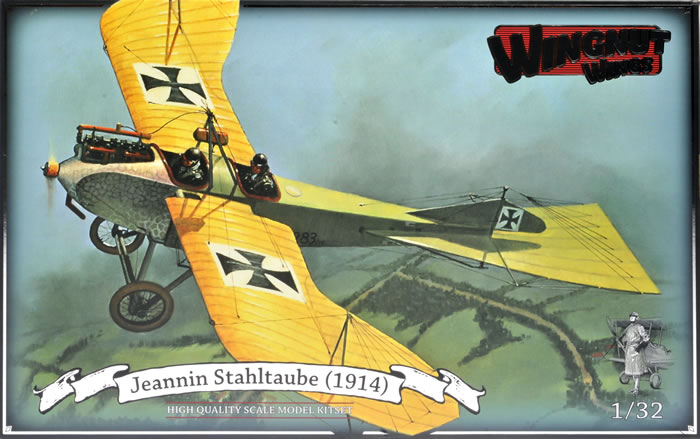
Wingnut Wings, 1/32 scale
| S u m m a r y |
Catalogue Number: |
Wingnut Wings Kit No. 32058 - Jeannin Stahltaube (1914) |
Scale: |
1/32 |
Contents and Media: |
163 parts in grey injection moulded plastic; two parts in clear; 21 photo-etched parts; markings for five aircraft. |
Price: |
USD$119 plus shipping available online from Wingnut Wings' website (due for release from this week onward). |
Review Type: |
First Look |
Advantages: |
Cleverly engineered for ease of assembly; outstanding representation of fabric, rib baton and general surface detail; translucent wing trailing edges; optional photo-etched wheel spokes; high quality mouldings with fine sprue attachments; comprehensive decal sheet in perfect register with minimal carrier film; full-colour instruction booklet doubles as a one-stop reference. |
Disadvantages: |
Tricky metal cowl effect. |
Conclusion: |
Wingnut Wings' 1/32 scale Jeannin Stahltaube (1914) meets the same high standard as the rest of the range, and is certainly one of the most interesting designs that we have seen! |
Reviewed by Brett Green

HyperScale is proudly supported by Squadron
The Etrich Taube, also known by the names of the various later manufacturers who build versions of the type, such as the Rumpler Taube, was a pre-World War I monoplane aircraft. It was the first military aeroplane to be mass-produced in Germany.
The Taube was very popular prior to the First World War, and it was also used by the air forces of Italy and Austria-Hungary. Even the Royal Flying Corps operated at least one Taube in 1912. On November 1, 1911, Giulio Gavotti, an Italian aviator, dropped the world's first aerial bomb from his Taube monoplane over the Ain Zara oasis in Libya.

Once the war began, it quickly proved inferior as a serious warplane and as a result was soon replaced by newer and more effective designs. Poor rudder and lateral control made the Taube difficult and slow to turn. The aeroplane proved to be a very easy target for the faster and more mobile Allied fighters of World War I, and just six months into the war, the Taube had been removed from front line service to be used to train new pilots. Many future German aces would learn to fly in a Rumpler Taube.*
*Historical summary adapted from Wikipedia
Wingnut Wings’ 1/32 scale Jeannin Stahltaube (1914) comprises 163 parts in grey injection moulded plastic, two parts in clear, 21 parts on a single photo-etched fret and markings for five aircraft.
In common with their earlier releases, Wingnut Wings' Jeannin Stahltaube (1914) features outstanding representation of fabric, rib baton and general surface detail; plus translucent wing trailing edges and raised details where appropriate.
Kit engineering is conventional and designed to make construction as painless as possible while not compromising on detail. The wings are moulded as one large single piece per side. As this aircraft employed wing warping for turning, you don't even have to worry about ailerons. Not many struts either!

The large horizontal tail is a single part too.
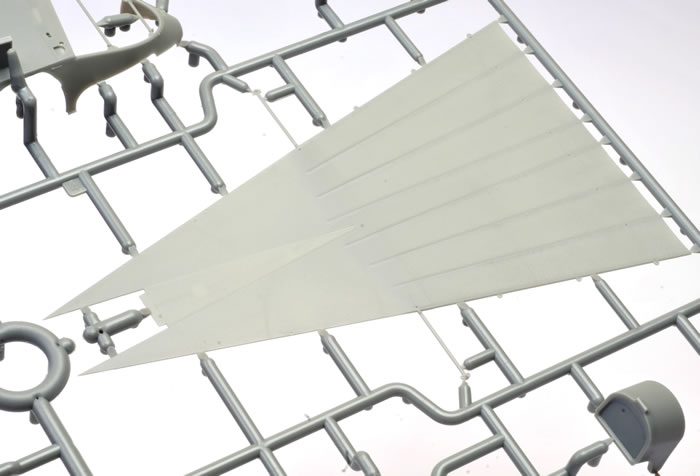
The fuselage interior includes plenty of detail including framework, bulkheads, control wheel and more. The instrument panel is adorned with individual authentic decal instruments, and a full page of the instruction is devoted to rigging (bracing wires and control cables) and painting the cockpit.
Wingnut Wings offers the choice between the Mercedes D.I and the Argus As.II engines. Both engines are real masterpieces - little models in their own right.
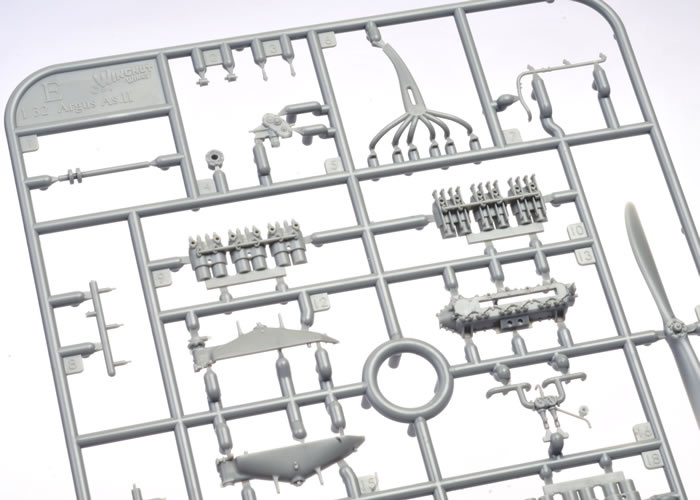
Other options include four different propellers, three styles of exhaust plus accessories - 20kg Carbonit bombs, a flare gun and a Luger Flugzeugpistole Automatik.
The engine cowling should be finished in a two-tone metallic turned effect. Although the instructions do not tell the modeller how to achieve this finish, there is a "Hints and Tips" page on the Wingnut Wings website that offers some helpful suggestions.
Plastic turnbuckles on the top and bottom cabane struts are supplied for the distinctive rigging.
The wheels are supplied in plastic, including wheel spokes that are as fine as one could expect from injection moulding technology. If you would prefer thinner spokes though, you are in luck as Wingnut Wings also supplies optional photo-etched spokes. Each wheel receives two spoked sides plus two photo-etched rims.
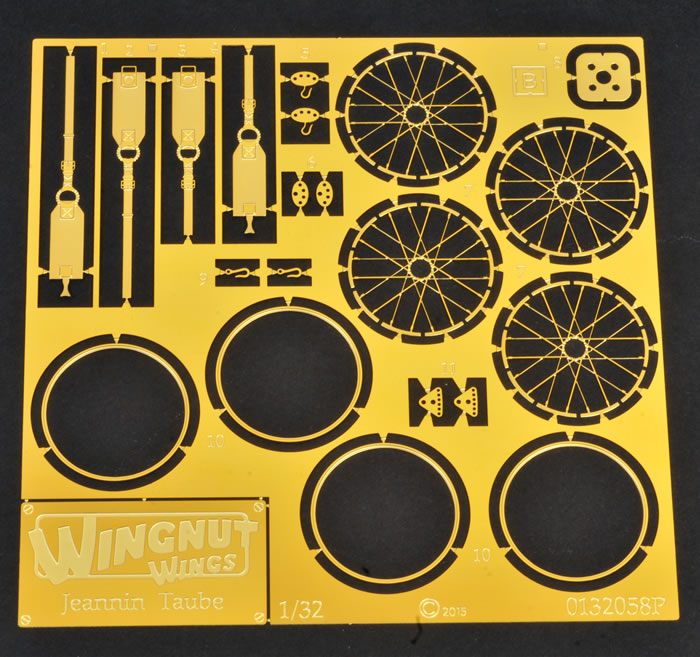
The clear parts are thin and free from distortion.
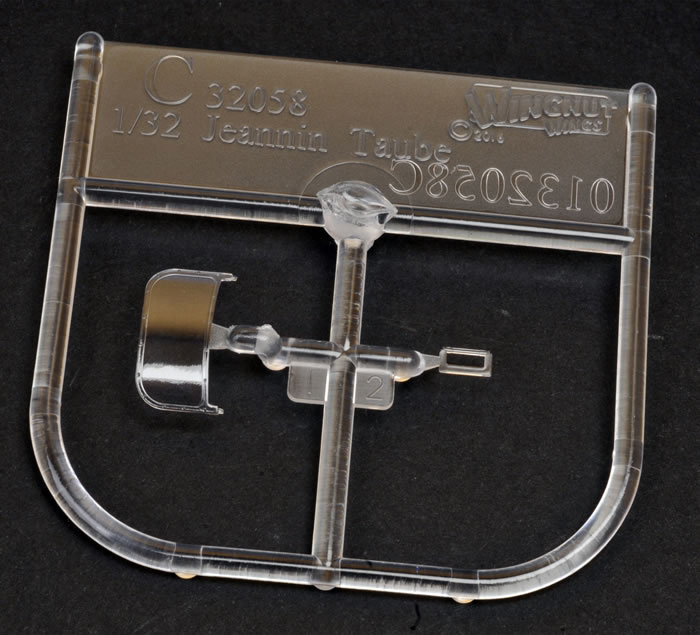
The 24 page instruction booklet is presented in the same format as its predecessors, with 3D construction views supplemented by generous reference photos of wartime machines.
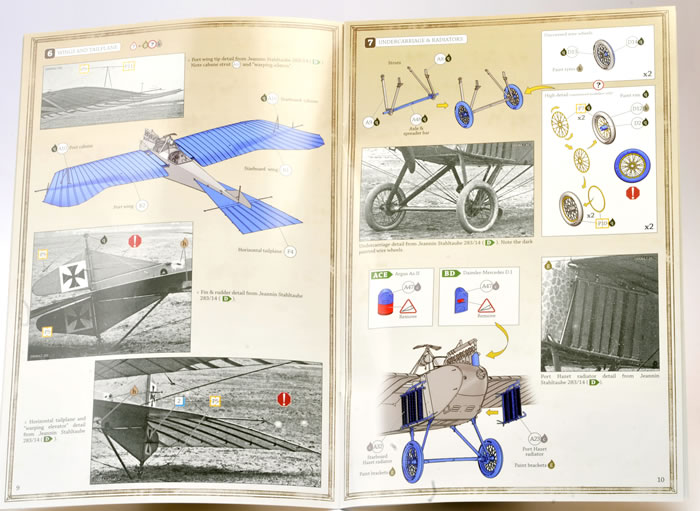
Marking Options
Five marking options are provided in various combinations of Field Grey and Unbleached Linen. I particularly like the late (1916 or 1917) option that is overall Field Grey with gigantic wing Iron Crosses that would be worthy of Rat Fink's Hot Rod.

The single decal sheet is printed by Cartograf. It is in perfect register and feature thin surrounds.
As always, Wingnut Wings extracts the best possible results from plastic moulding technology thanks to their exemplary research, brilliant digital modelling and eagle-eyed supervision of the mould cutting, toolmaking and production process.
The result is a series of kits that has inspired many modellers who might not have previously considered building either a WWI subject or a 1/32 scale model to try something different.
With its large, single-deck wings and bird-like tail feathers, this Jeannin Stahltaube (1914) should be not only a straightforward project for the WWI novice modeller, but also a striking display piece.
Oh Wingut Wings, you've done it again!
Thanks to Wingnut Wings for the review sample.
Review Text and Images Copyright © 2017 by Brett Green
Page Created 16 October, 2017
Last updated
16 October, 2017
Back to HyperScale Main Page

|
